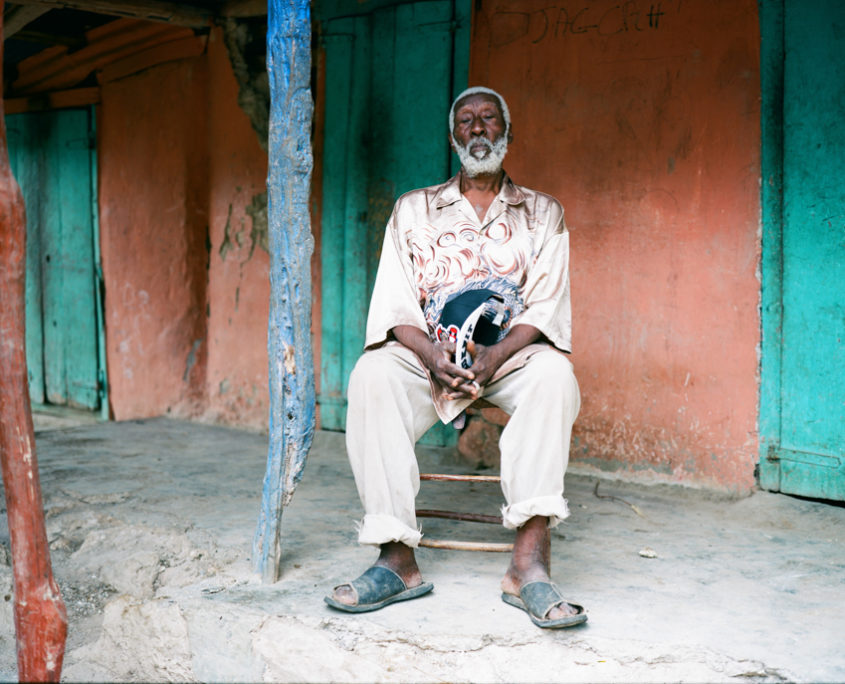Wisman Augustin, the aging patriarch of rara Laflè Modèl, on his porch on a ridge above
the community of Lafond. Although he no longer marches out with the rara, he still comes
down from his house every year on Good Friday to perform a cleansing launch ceremony and “send the rara out.”
Laflè Modèl of Kalafon
Founded in 1938 or thereabouts, shortly after the end of the United States military occupation of Haiti, Laflè Modèl is a “family obligation” of the Augustin / Bellevue clan of Lafond, or Kalafond, as it is called by old-timers. The tonel, or home base of the rara, is in the yard of Wisman’s sister, Agosta, near the banks of the River Gosseline; the community was devastated by severe flooding during Hurricane Gordon, when farms, houses, livestock and plantings were swept away by the raging torrent. Like many other residents of Lafond, Wisman moved to the hills.
The rara is led by a djab, or spirit, named Chenn nan Ren, which resides in a massive tree on the riverbank. It is in order to appease or satisfy this spirit that the rara must march out every year, “or else bad things can happen to the family,” in the words of Ronald Bellevue, the current caretaker and driving force behind the rara’s sorties.
(mouse over the images below for more about Laflè Modèl; listen to audio by following the soundcloud links on the right)
Audio from Laflè Modèl of Lafond
A young flagbearer from the upcoming rara generation, Stanley, sings an acapella version of a vodou and rara song for the lwa Agarou:
And below, the same theme as performed by the rara Laflè Modèl, in full swing:
Inside the tonel, before marching out to do metaphysical battle on the highways and byways, the core musicians of Laflè Modèl perform a salutation for the lwa Azaka Mede, or Minis Zaka, a spirit closely associated with agriculture and herbal healing. Often seen wearing a blue gingham work shirt and red handkerchief, Zaka represents the indomitable spirit of the small farmer in a country where the extreme centralization of government and resources on Port-au-Prince has historically made for a deep gulf between city and country.


